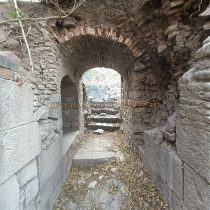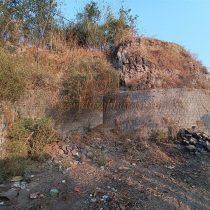KANHA
TYPE : FORTRESS
DISTRICT : PARBHANI
HEIGHT : 0
GRADE : EASY
While exploring Parbhani district, small forts like Nemgiri, Pathari, Kanha, Gangakhed, Selu can be seen but these forts are not mentioned anywhere. Apart from the two forts namely Nemgiri and Pathri, the remaining three places are fortresses. Since the Nizam ruled this area till the pre-independence period, these forts and fortresses remained in good condition till recent times. These fortresses are falling into ruins as it becomes difficult for its owner to maintain these fortresses which are private property. The fortress at Kanha is one of them. Locals know it as Deshmukhs fortress. To visit Kanha fortress, we first have to reach Jintur, a taluka town in Parbhani district. Since Kanha village is not very far from here, one has to reach Charthan village which is 18 km away from here.
...
The distance from Charthan to Kanha is 5 km and private rickshaws are available to go there. While entering the village of Kanha, the fortifications and bastions of the fortress can be seen from the road. There are two parts of the fortress namely the main fortress and Citadel and adjacent to the fortification of the main fort there is a collapsed fortification of Citadel. The ramparts of the fortress are about 40 feet high, the lower 15 feet of which is made of stone and the upper part of white clay. As the wall of Citadel is mostly destroyed, its height and the door in it cannot be estimated. There were sometimes horse stables on the south side of Citadel. But now there is a large amount of vegetation. On the northern side of the Citadel is a newly constructed cattle shed and from here the main fort can be reached. A well in Citadel can be seen at some distance near this door. The entire fortress is spread over about one acre and the main fortress has five bastions in its fortifications. The gate of the main fortress is built on the basis of two of these bastions. The main gate of the fortress faces north and is built of stone and brick between two bastions and may have been built later. The construction of the door is made of stone and the construction of the arch is made of bricks. The second gate of the fortress faces east and is built between two bastions in such a way that it is not visible from the front. This door has guard rooms inside. After entering through this door, we come to the first porch or base. On the left side of here is the third gate of the fortress. All the gates of the fortress are built at right angles, after entering through this door we come to a spacious place. This place has high porches on both sides and once this place was the sadar (office space) of the fort. There is a fourth crumbling gate in front of here and after climbing five steps we come to the inner part of the fortress. Inside are the remains of a large two-storied four cornered mansion with newly built houses on its base. There is a 70 feet deep and 9 feet diameter well on the rampart near the gate and the upper construction of this well is made of crushed stone and the lower construction is made of bricks and lime. On the recent side of the well there are steps leading to the ramparts and after climbing these steps, there is the tomb of Baba Dastgir, a Sufi saint, on a counter built on a bastion. While walking in the inner part of the fortress, one can see the places where rain water goes out of the fortress, underground warehouses and grain storage pits. The inner part of the fortress has newly built houses and thus the interior of the fortress has completely changed. Since this part of the fortress is at the highest point, the entire village and surrounding area can be seen from here. Half an hour is enough to go around the entire fortress. As no one lives in the fortress at present, the door of it is locked. Deshmukh, a descendant of the fortress, lives in a village outside the fortress and one can get a key from him to visit. Although the date of construction of the fortress is unknown, Babasaheb Deshmukh is considered to be the oldest known descendant of this Deshmukh family. Deshmukhs last name was Kanhekar. During the Marathwada Liberation War in 1948, when the Razakar attacked this fortress, Nanasaheb Deshmukh, the then descendant, took shelter in the nearby Loni village.
© Suresh Nimbalkar













